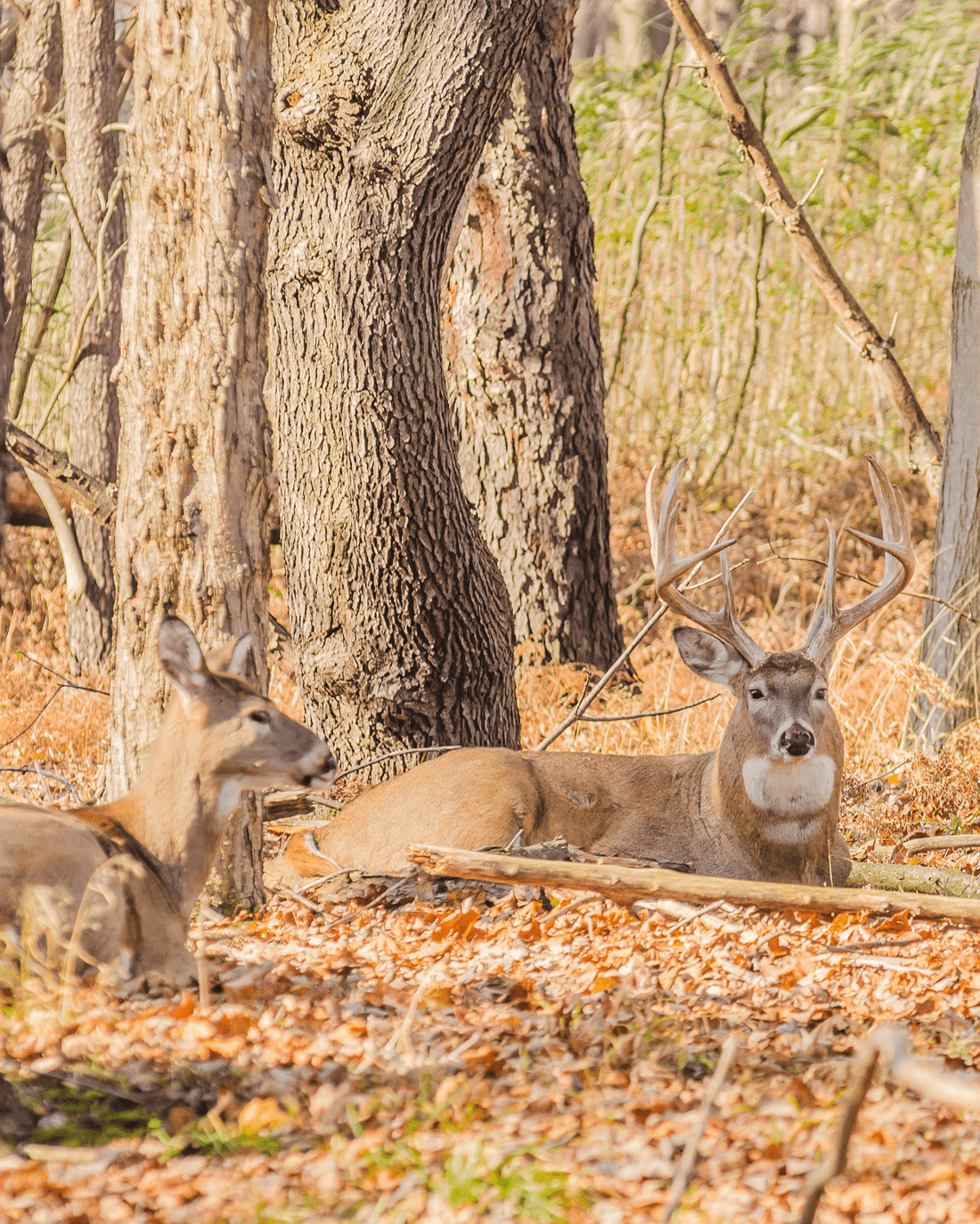Whitetail Slumber: Unveiling the Bedding Habits of North America's Deer
In the vastness of North America's wilderness, the whitetail deer reigns supreme as a master of adaptation. To truly understand these elusive creatures, we must delve into the often-overlooked realm of their sleeping and bedding habits. Join me, as we embark on a quest to shed light on the secret world of whitetail slumber.
Sanctuaries of Rest: Selecting the Ideal Bedding Sites
Whitetail deer possess an innate knack for choosing the perfect bedding sites, where they seek solace and security during their much-needed repose. These sanctuaries are carefully selected to provide protection from predators while offering optimal visibility and escape routes. Dense vegetation, such as tall grasses, shrubs, or thickets, serves as natural bedding areas, providing both camouflage and shelter from prying eyes.
The Art of Bedding: Creating Comfort in the Wild
Creating a comfortable bedding spot in the wild is an art form mastered by whitetail deer. They skillfully trample down the vegetation beneath them, creating a circular or oval-shaped depression known as a bed. This process not only provides a comfortable resting place but also enables them to achieve a lower profile, further enhancing their camouflage and protection. These beds are often reused, showcasing the deer's resourcefulness and efficiency.
Safety First: Strategic Bedding Locations
Whitetail deer are astute strategists when it comes to selecting bedding locations. They favor areas that offer a combination of factors, including proximity to reliable food sources, access to water, and suitable escape routes. Forest edges, where dense cover meets open terrain, are particularly favored as they provide a perfect balance of concealment and visibility. Additionally, bedding near topographical features like hills or ravines allows deer to exploit the advantage of elevation, enhancing their ability to detect potential threats.
Timing is Key: Bedding Patterns Throughout the Day
Whitetail deer display distinct patterns in their bedding behavior, often dictated by external factors such as temperature, predation risk, and human disturbance. During the summer months, deer typically bed down in shaded areas during the day, seeking relief from the scorching sun. As the cooler evening hours approach, they venture out to feed and socialize before selecting a new bedding spot for the night. This cyclical pattern ensures they maximize their chances of survival while balancing their need for rest and nourishment.
The Mystery of Solo vs. Group Bedding
While whitetail deer are known to be social creatures, their bedding habits can vary between solitary and group arrangements. Solitary bedding is more common during periods of low predation risk or when resources are abundant. Conversely, during winter or in areas with higher predator densities, deer may opt for communal bedding, taking advantage of the safety in numbers. These group beds can accommodate multiple individuals, fostering a sense of security and vigilance.
In the intricate tapestry of North America's wilderness, the bedding habits of whitetail deer offer a glimpse into their survival strategies and instincts. As we venture into the wild, we unravel the secrets of their chosen sanctuaries, witness their skilled creation of comfortable sleeping spots, and understand their strategic selection of bedding locations. The dance between safety, sustenance, and rest becomes apparent, painting a vivid picture of the resilience and adaptability of these remarkable creatures.
So, let us celebrate the slumber of whitetail deer, for it is within these hallowed beds that the wild spirit finds solace, and the essence of North America's wilderness thrives.
